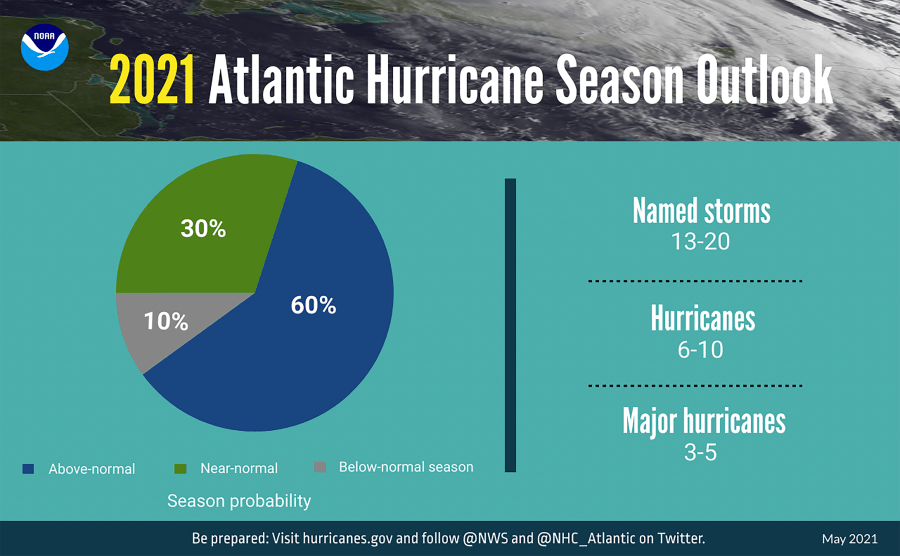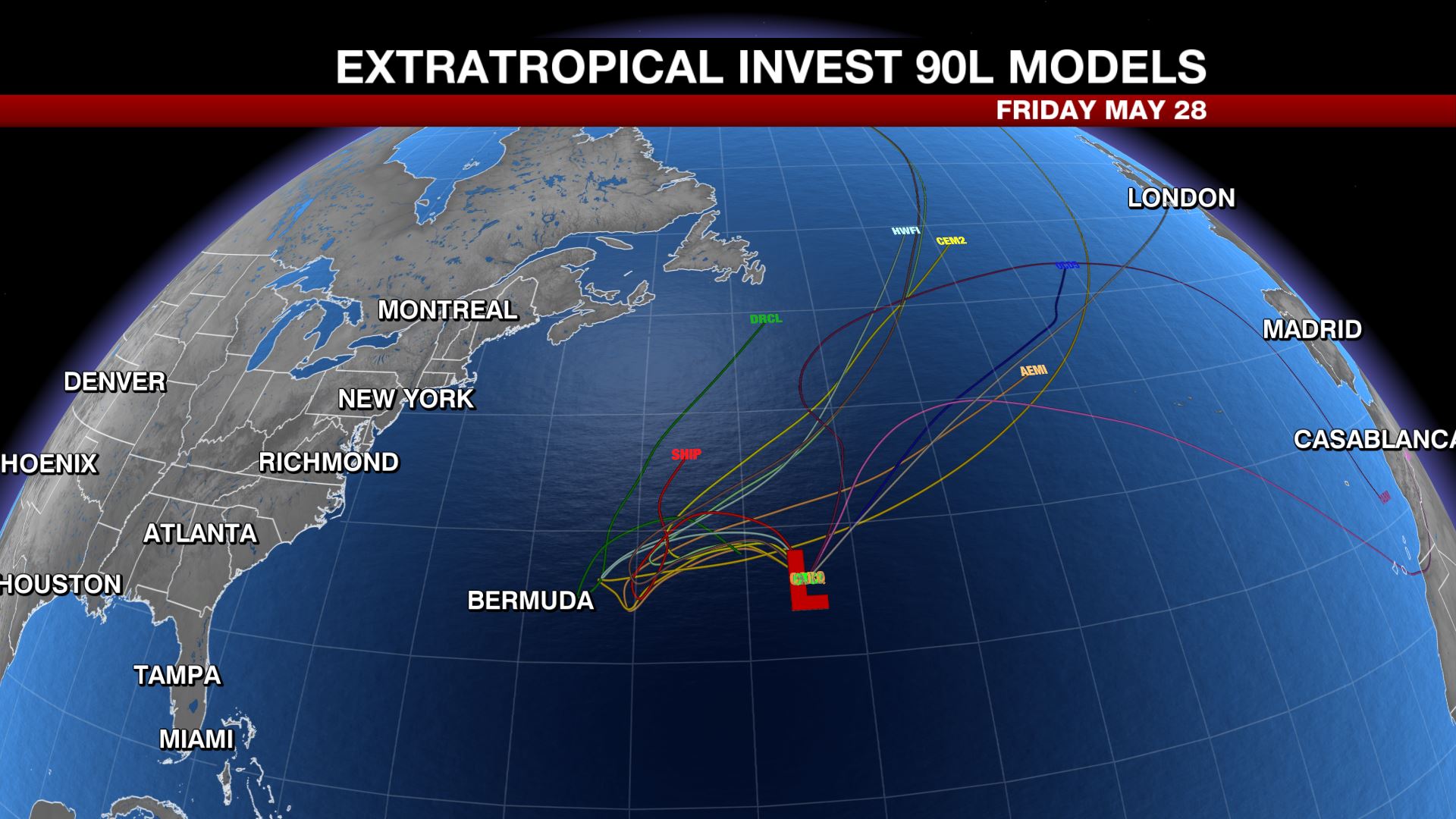TAMPA, Fla. (WFLA) – The National Oceanic and Atmospheric Administration announced Thursday it expects another “above average” Atlantic hurricane season this year.
Forecasters with NOAA predict a 60% chance of an above-normal season, a 30% chance of a near-normal season and 10% chance of a below-normal season. However, experts do not anticipate the historic level of storm activity seen in 2020. They predict this with 70% confidence.
NOAA’s Climate Prediction Center prediction includes a range of 13 to 20 named storms (winds of 39 miles per hour or higher), of which six to 10 could become hurricanes (winds of 74 miles per hour or higher), including three to five major hurricanes (category 3, 4 or 5; with winds of 111 mph or higher).

The Atlantic hurricane season officially starts June 1 and ends Nov. 30.
Our Max Defender 8 meteorologists already tracking a high-chance development in the Atlantic Basin. According to NOAA, it will likely become a subtropical cyclone near and to the northeast of Bermuda on Friday. The system is expected to move toward the north and northeast into a more hostile environment by late Sunday into Monday.
“Now is the time for communities along the coastline as well as inland to get prepared for the dangers that hurricanes can bring,” said Secretary of Commerce Gina Raimondo. “The experts at NOAA are poised to deliver life-saving early warnings and forecasts to communities, which will also help minimize the economic impacts of storms.”
Last month, NOAA updated the statistics used to determine when hurricane seasons are above-, near-, or below-average in relation to the latest climate record. Based on this update, an average hurricane season produces 14 named storms, of which seven become hurricanes, including three major hurricanes.

“Although NOAA scientists don’t expect this season to be as busy as last year, it only takes one storm to devastate a community,” said Ben Friedman, the acting NOAA administrator. “The forecasters at the National Hurricane Center are well-prepared with significant upgrades to our computer models, emerging observation techniques, and the expertise to deliver the life-saving forecasts that we all depend on during this, and every, hurricane season.”
Forecasters with Colorado State University also predicted “above normal activity” for this year. The group predicts 17 named storms in 2021 with eight hurricanes – four of them major hurricanes.








